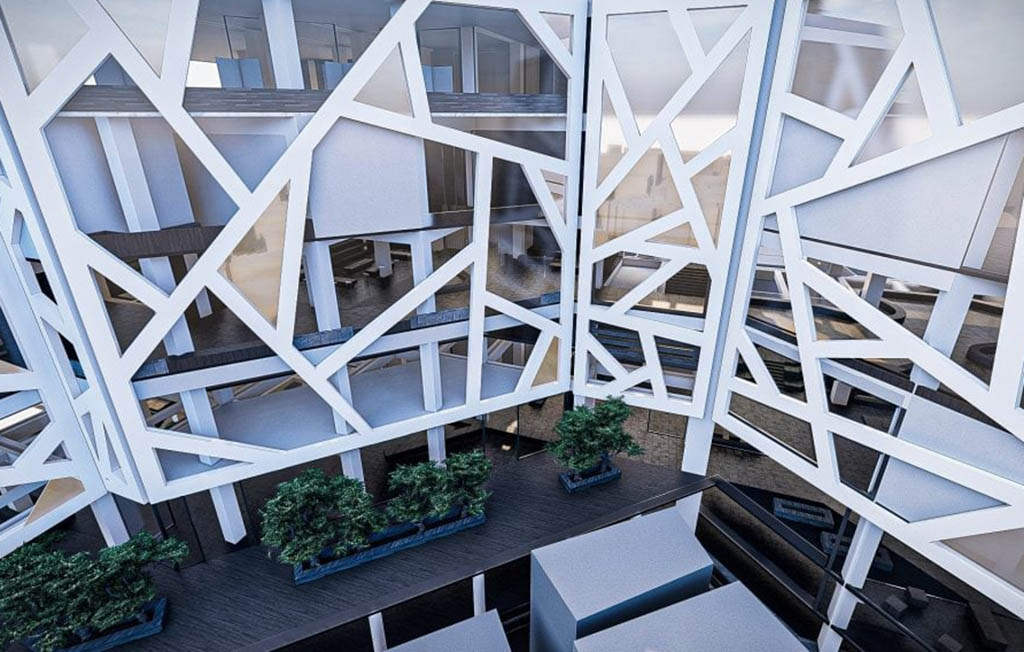Website Design Services Thailand
Total Website Design Services Thailand
Website Design refers to a comprehensive approach to designing and developing a website, encompassing all aspects of the process from start to finish. It involves creating a visually appealing and functional website that meets the client’s objectives and provides a seamless user experience.
Here are the key components typically included in full-service website design:
Planning and Strategy: This stage involves understanding the client’s goals, target audience, and requirements. It includes conducting research, competitor analysis, and creating a strategic plan for the website’s structure, content, and functionality.
Web Design: Designers work closely with the client to create a visually appealing and engaging website. They develop a layout, choose colour schemes, typography, and imagery that align with the client’s branding and user preferences. The design process may involve wireframing, prototyping, and obtaining client feedback before finalizing the visual elements.
Front-end Development: Once the design is approved, front-end developers code the website using HTML, CSS, and JavaScript. They ensure that the website is responsive, meaning it adapts to various devices and screen sizes, providing a seamless experience on desktops, tablets, and mobile devices.
Back-end Development: Back-end developers build the website’s functionality, working with server-side technologies such as PHP, Python, or Ruby on Rails. They handle tasks like database integration, user authentication, content management system (CMS) setup, e-commerce functionality, and other custom features required by the client.
Content Creation: Content writers and copywriters create compelling and search engine optimized (SEO) content for the website, ensuring it is informative, engaging, and aligned with the client’s messaging and brand voice. They may also assist in content migration from an existing site or create new content from scratch.
Search Engine Optimization (SEO): SEO specialists optimize the website’s structure, content, and meta tags to improve its visibility in search engine results. This involves keyword research, on-page optimization, backlink building, and other strategies to enhance organic search rankings and drive targeted traffic to the site.
Quality Assurance and Testing: The website goes through thorough testing to identify and fix any bugs, errors, or compatibility issues. This includes functionality testing, browser compatibility testing, performance testing, and user acceptance testing to ensure a seamless user experience across different platforms.
Deployment and Launch: Once the website is thoroughly tested and approved by the client, it is deployed to the live server and made accessible to the public. This involves configuring hosting, domain setup, and finalizing any integrations required for the website’s operation.
Maintenance and Support: After the website is launched, ongoing maintenance and support are crucial to keep it up-to-date, secure, and optimized. This may include regular backups, software updates, security monitoring, bug fixes, and content updates as per the client’s requirements.
Total website design provides expertise and resources in each of these areas to deliver a comprehensive solution to you. I collaborate closely with you throughout the process to ensure the final website meets your expectations and achieves all your goals.
web design for a new site
Modern day web design is a dynamic and evolving field that requires constant adaptation and innovation. A good website design should be user-friendly, responsive, accessible, and aesthetically pleasing. It should also reflect the brand identity and values of the business or organization. A website designer should be proficient adapting skills to suit the clients needs and keep up with the latest trends and best practices in the industry.
A website should be like a bowl of “Tom Yum” – perfect ingredients, visually appealing presentation and superbly blended for maximum impact.


re-design an existing website
Re-designing a website can have many benefits for a business or an organization. Some of the reasons to re-design a website are:
– To improve the user experience and usability of the website.
– To update the content and features of the website to match the current needs and goals of the business or organization.
– To enhance the visual appeal and branding of the website.
– To optimize the website for search engines and social media platforms.
– To ensure the website is compatible with different devices and browsers.
search engine optimisation SEO
Re-designing a website can have many benefits for a business or an organization. Some of the reasons to re-design a website are:
- To improve the user experience and usability of the website.
- To update the content and features of the website to match the current needs and goals of the business or organization.
- To enhance the visual appeal and branding of the website.
- To optimize the website for search engines and social media platforms.
- To ensure the website is compatible with different devices and browsers.


copywriting and AI
Are you looking for a way to create engaging and effective website content for your business? In the past I needed to completely learn about your business! Now, you will be interested to know that I use AI to assist in effective and meaningful copywriting for you.
AI is a powerful tool that can generate high-quality and relevant text for your website, based on your keywords, audience, and goals.
AI can also help you optimize your website content for SEO, readability, and conversion. Whether you need a catchy headline, a compelling landing page, or a persuasive call to action, AI can help you craft the perfect website copy for your business.
social media integration
Website social media integration is a process of connecting your website with various social media platforms, such as Facebook, Twitter, Instagram, Google Business, LinkedIn, etc. This allows you to share your content, engage with your audience, and increase your online visibility.
Website social media integration can also help you to boost your SEO, traffic, and conversions. A cohesive approach (TOTAL WEB DESIGN) concentrates your online footprint into a high-ranking powerhouse ready to achieve your desired goals and objectives. And we haven’t even begun with Digital Marketing!!

F.A.Q
Web design and development Thailand frequently asked questions
Website design pricing can vary depending on many factors, such as the complexity of the project, the number of pages, the features and functionality, and the level of customization. A simple website with basic information and a few images may cost a few hundred dollars, while a more elaborate website with e-commerce, interactive elements, and custom graphics may cost thousands of dollars. Therefore, it is important to compare different website design pricing options and find the best value for your needs.
- Your website should have a clear purpose and audience, and provide useful and relevant content that meets the needs and expectations of the visitors.
- The website should have a fast and responsive design, and be compatible with different devices and browsers, ensuring a smooth and user-friendly experience.
- A high-quality website should have a simple and intuitive navigation, and follow the best practices of web accessibility, making it easy for everyone to access and understand the information.
- Your website should have a credible and trustworthy domain name, and use secure protocols and encryption to protect the privacy and security of the users and their data.
- Websites today should have a consistent and attractive visual style, and use high-quality images, videos, fonts, colours, and layouts that enhance the content and the brand identity.
- Factor in an original and engaging voice, and use clear, concise, and error-free language that communicates effectively with the audience and reflects the tone and personality of the website.
- Your website should have regular and updated content, and provide fresh and relevant information that keeps the visitors interested and informed.
- A social media presence is a must, and use your various platforms to promote the website, interact with the audience, and increase the visibility and reach of the content.
- A new high-quality website should have a feedback mechanism, and encourage the visitors to share their opinions, suggestions, questions, or complaints, and respond to them promptly and professionally.
- Analytics are essential. Your designer should set up performance measurement tools, and use analytics to track and evaluate the traffic, behaviour, engagement, conversion, and satisfaction of the visitors, and use the data to improve the website.
One of the most common questions we get from our clients is: how long does it take to build a new website? The answer, of course, depends on many factors, such as the size, complexity, functionality and design of the website. However, in this FAQ, we will try to give you some general guidelines and best practices to help you plan your website project and set realistic expectations.
The first step in building a new website is to define the scope and goals of the project. This involves gathering information about your target audience, your competitors, your brand identity, your content strategy and your desired features and functionalities. This step can take anywhere from a few days to a few weeks, depending on how much research and analysis you need to do.
The next step is to create a wireframe and a mockup of your website. A wireframe is a simple layout of the main elements of each page, such as the header, footer, navigation, content and images. A mockup is a more detailed and realistic representation of how your website will look and feel, including the colors, fonts, graphics and animations. This step can take anywhere from a few days to a few weeks, depending on how many pages you need to design and how many revisions you need to make.
The third step is to develop and code your website. This involves converting your mockup into a functional website that works across different browsers and devices. This step also includes testing your website for any errors or bugs and optimizing it for speed and performance. This step can take anywhere from a few weeks to a few months, depending on the complexity and functionality of your website.
The final step is to launch your website. This involves transferring your website files to a web server, setting up your domain name and hosting service, configuring your email accounts and analytics tools, and making any final adjustments or tweaks. This step can take anywhere from a few hours to a few days, depending on how smoothly everything goes.
As you can see, building a new website is not a quick or easy process. It requires careful planning, coordination and communication between you and your web developer. However, if you follow these steps and best practices, you can ensure that your website project will be completed on time and on budget.
SEO stands for search engine optimization, which is the process of improving the visibility and relevance of a website or a web page in the organic results of a search engine. SEO is important for several reasons:
- It helps to attract more qualified traffic to your website, which can lead to more conversions, sales, leads, or other desired actions.
- It helps to build trust and credibility among your target audience, as they are more likely to click on the results that match their search intent and provide useful information.
- It helps to gain a competitive edge over your rivals, as you can rank higher for the keywords and topics that matter to your niche and industry.
- It helps to increase your brand awareness and recognition, as more people will see and remember your website name and logo when they search for relevant queries.
However, SEO is not a one-time activity or a quick fix. It requires consistent effort, patience, and adaptation to the changing algorithms and user behaviour of search engines. The timeframe for good SEO depends on various factors, such as:
- The current state of your website, such as its technical aspects, content quality, user experience, and link profile.
- The level of competition in your niche and industry, such as how many other websites are targeting the same keywords and topics as you.
- The goals and objectives of your SEO strategy, such as what kind of results you want to achieve and how you measure them.
- The resources and budget that you allocate for your SEO activities, such as how much time, money, and expertise you can invest in optimizing your website.
Generally speaking, it can take anywhere from 3 to 12 months or more to see significant improvements in your SEO performance. However, this does not mean that you should stop optimizing your website after that period. SEO is an ongoing process that requires constant monitoring, analysis, and refinement to maintain and enhance your rankings and results.
- Define the goals and objectives of the website, such as increasing brand awareness, generating leads, or providing information.
- Conduct thorough research on the target audience, competitors, industry trends, and best practices for web design and development. In a nutshell, keywords and key phrases must be locked down before you do anything!
- Create a sitemap and a wireframe that outline the structure, layout, and navigation of the website, as well as the content and functionality of each page. Start with highlighting some existing websites that you like – this is the way!
- Choose a suitable colour scheme, typography (font), imagery, and style that reflects the brand identity and appeal to the target audience.
- Develop the website using a responsive and user-friendly framework that ensures compatibility across different devices and browsers.
- Test the website for functionality, usability, accessibility, performance, and security issues, and fix any errors or bugs before launching.
- Optimize the website for search engines by applying SEO techniques such as keyword research, meta tags, content optimization, and link building.
- Launch the website and monitor its performance using analytics tools, such as Google Analytics, to measure traffic, conversions, bounce rate, and other metrics.
- Maintain and update the website regularly to keep it fresh, relevant, and secure.

